How two architects transformed the way we present architectural projects by creating an AI-powered storytelling interface that turns technical drawings into compelling visual narratives.
The Genesis: Beyond Plans and Sections
Traditional architectural presentations often fail to bridge the gap between professional technical documentation and client understanding. James discovered that:
- Clients struggle to visualize spaces from technical drawings
- Emotional connections are lost in sterile architectural representations
- Stories behind designs remain untold and unexplored
- Communication barriers prevent true collaboration between architects and clients
So who is this storyteller platform for?
For this let us tell you a story; the story of James. a renowned designer from Dublin. He’s analytical, detail-driven, and deeply passionate about architectural storytelling. But he’s not a comic artist.He’s someone who wants to explain his design process to clients, colleagues, or even himself—not with technical plans, but with stories.
The Storyteller is built for users like James.
In our narrative, James is told, “We’re designers, not storytellers.”
But in reality, design is storytelling.
Every plan, every section holds intention.
So we imagined a system that lets designers frame those intentions as visual narratives—something more expressive than a rendering, more relatable than a technical drawing.
ames recognized that every building has a story, and every client deserves to see their dreams visualized in a language they can understand. James knew that every building like people is not the same, every building is different. Every building has a story.
“After all, we are just stories in the end; isn’t it?” james questions
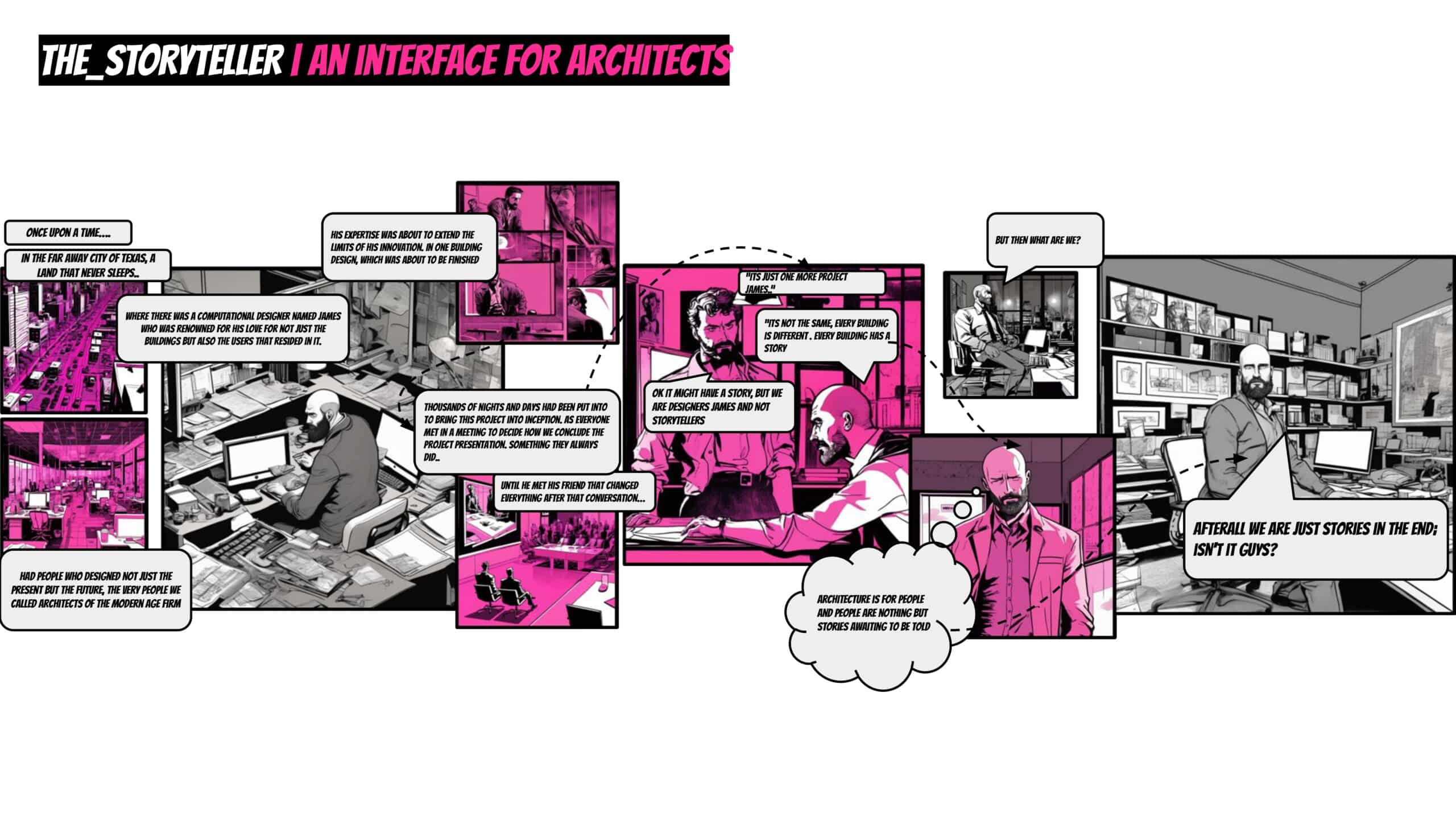
James begins to create his own visuals—not from scratch, but through a smart system.
By inputting prompts, uploading references, and applying logic, he builds not just a building—but a comic-style breakdown of its concept, context, and users.
Now his projects aren’t just shared—they’re felt.
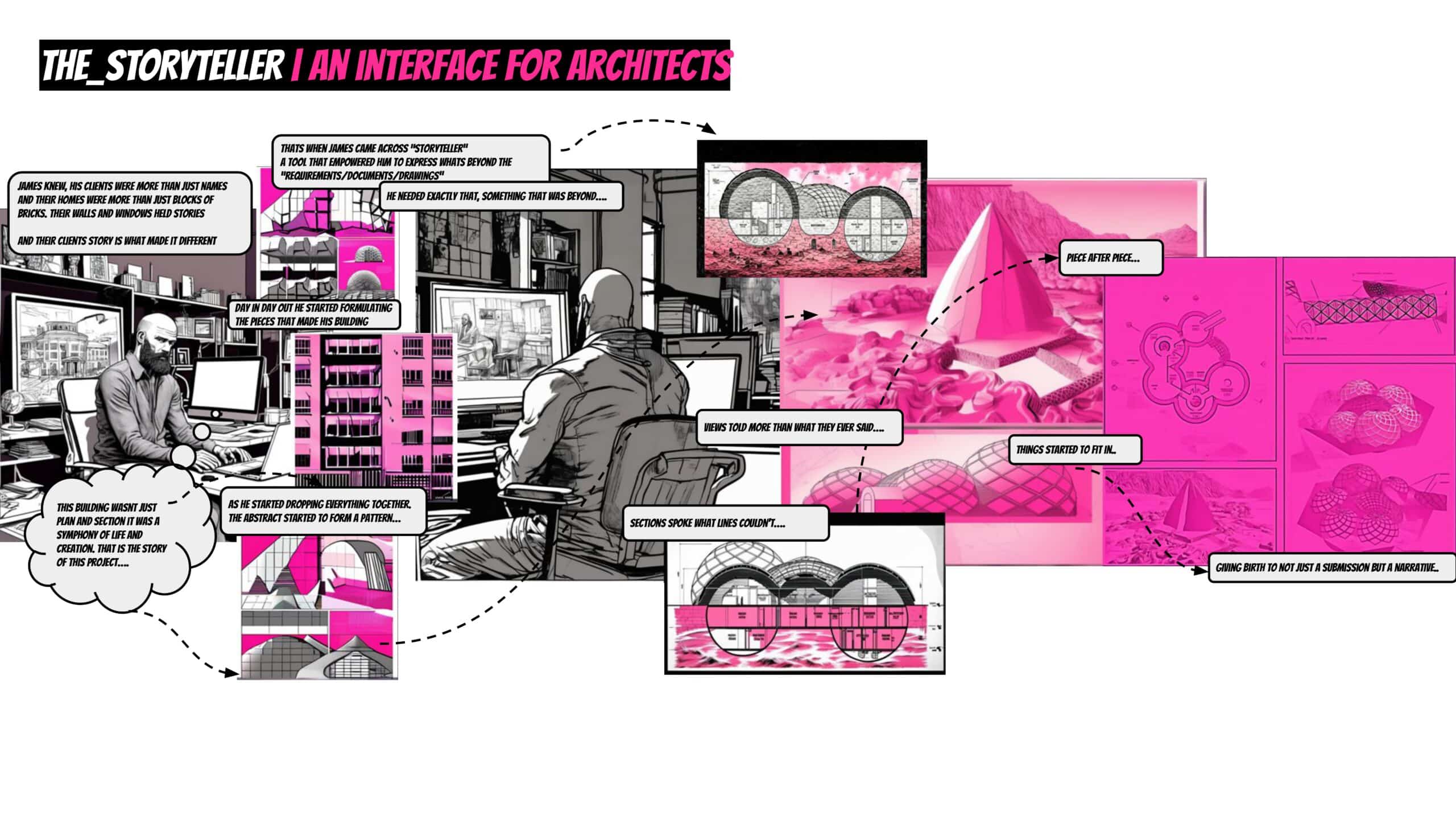
The pursuit of building a narrative didnt just remain as something just aesthetic, but rather pioneered to break the pattern of how things worked till date. This time the response of Mr and Mrs smith changed completely, they werent just recieving details of their home project but this time they ‘understood’ it. This time there werent just plans and sections that they couldnt understand, this time they had their building but as a story: Their story.
This expression didnt just stay limited to Mr and Mrs. Smith, it expanded to every other person james deesigned for. Everything changed as the storytelling impacted every client and every project fruitfully. Allowing them to be able to be partof the design process. Helping architects tell the story of architecture and its people.

Core Philosophy
The tool operates on a simple but powerful principle: Architecture isn’t just about buildings; it’s about the stories they tell and the lives they shelter.
Technical Innovation: The AI Engine Behind the Magic
The LoRA Training Pipeline
Our technical approach centers around a sophisticated LoRA (Low-Rank Adaptation) training system that creates unique artistic styles:
Dataset Creation
- SinCity Dataset – Noir comic aesthetic for dramatic architectural visualization
- PinkPanic Dataset – Personal artistic style for emotional storytelling
- Combined PinkSin Dataset – Fusion of both styles (110 images total)
Training Process
- Style fusion creating the unique “PinkSin” aesthetic
- 75 samples from PinkPanic style
- 30 samples from SinCity noir aesthetic
- Custom LoRA models trained on SDXL base architecture
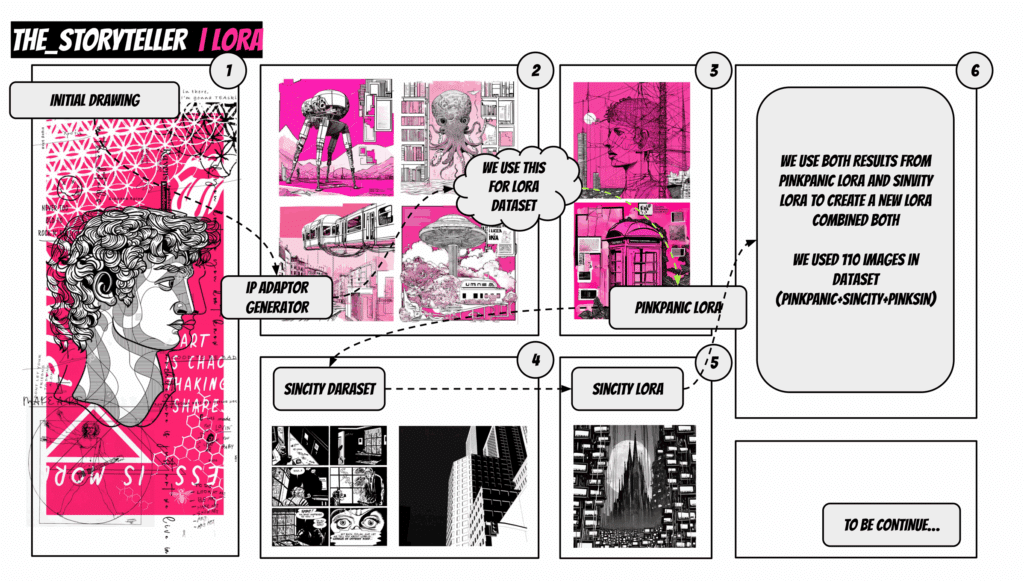
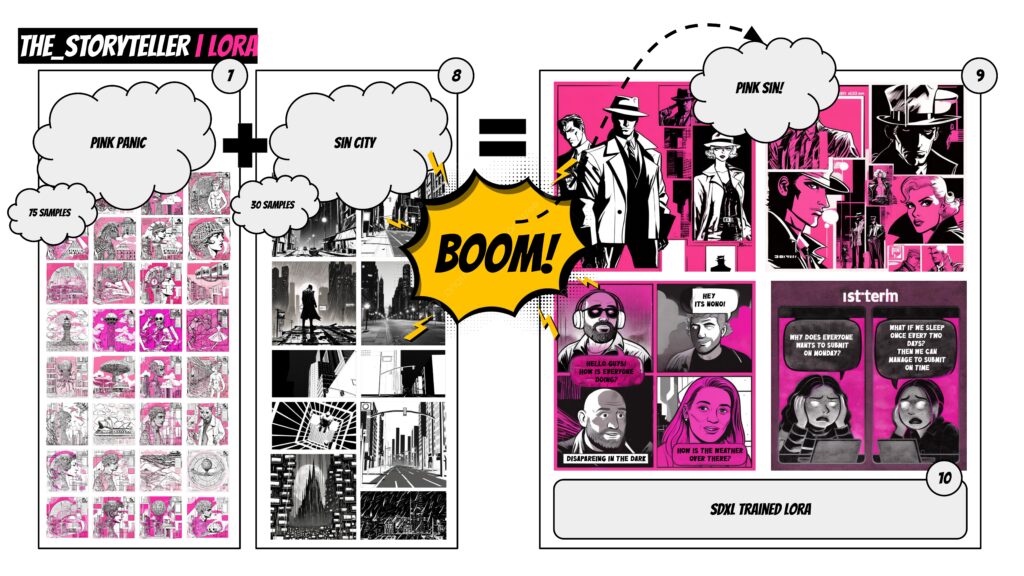
The Solution: The Storyteller Interface
What is The Storyteller?
The Storyteller is a revolutionary AI-powered tool that transforms architectural drawings and concepts into compelling visual narratives. It combines:
- Advanced AI image generation using Stable Diffusion XL
- Custom-trained artistic styles through LoRA (Low-Rank Adaptation)
- Interactive user interface built with Gradio
- Architectural storytelling methodology that puts human experience first
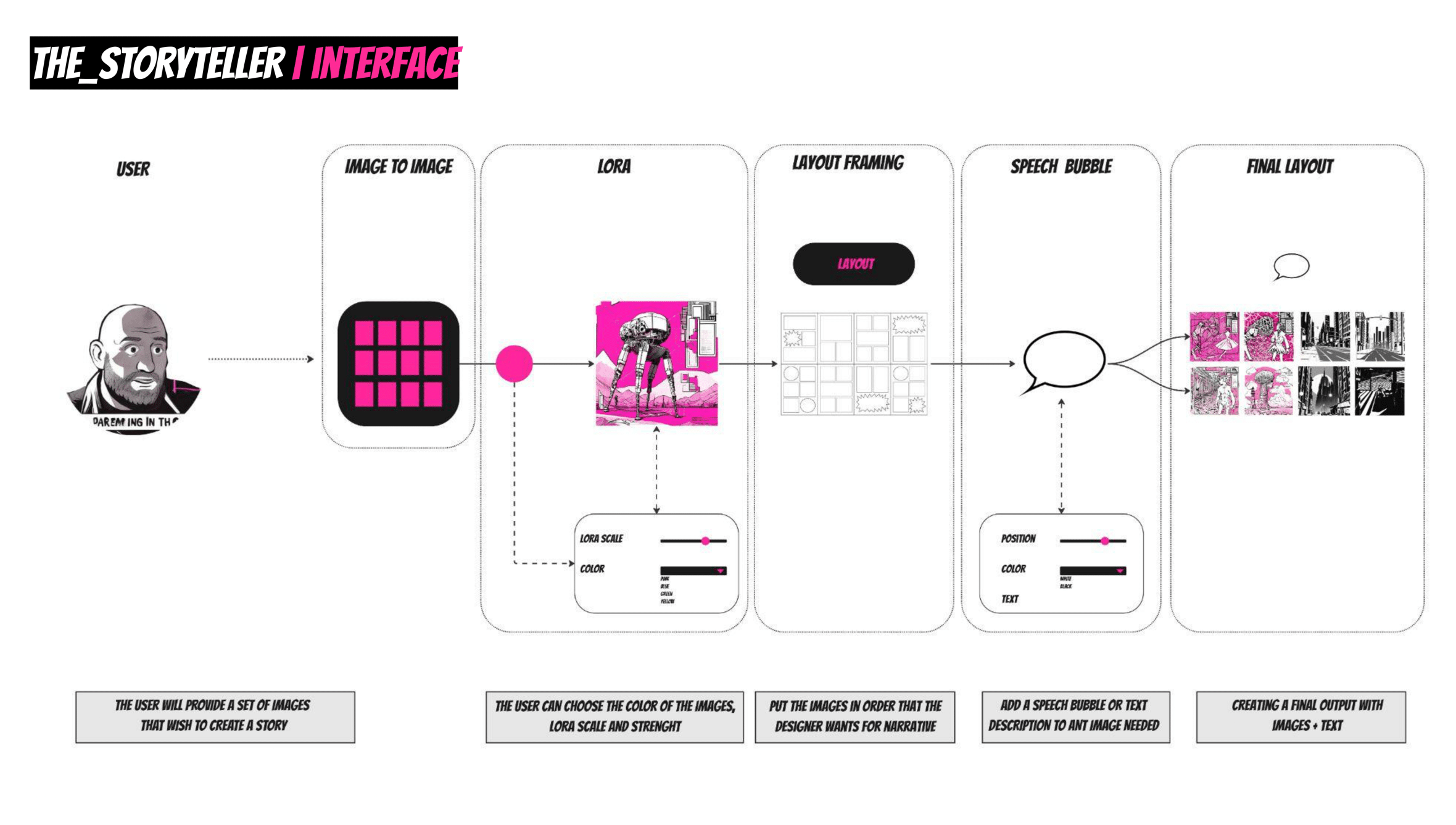
Technical Architecture
Our system integrates multiple AI components:
1. Main Model: Stable Diffusion XL (SDXL)
- High-resolution image generation
- Complex prompt handling capabilities
- Professional-quality architectural visualization
2. LoRA Model: Custom Style Adaptation
- Trained for Sin City noir comic style
- Integrated PinkPanic personal aesthetic
- Lightweight adaptation for specific architectural storytelling
3. ControlNet Model: Canny Edge Detection
- Precise structural control over generated images
- Maintains architectural accuracy while adding artistic flair
- Ensures technical drawings translate properly to visual narratives
4. Diffusers: Pipeline Integration
- Seamless integration of all components
- Optimized processing workflow
- User-friendly interface implementation
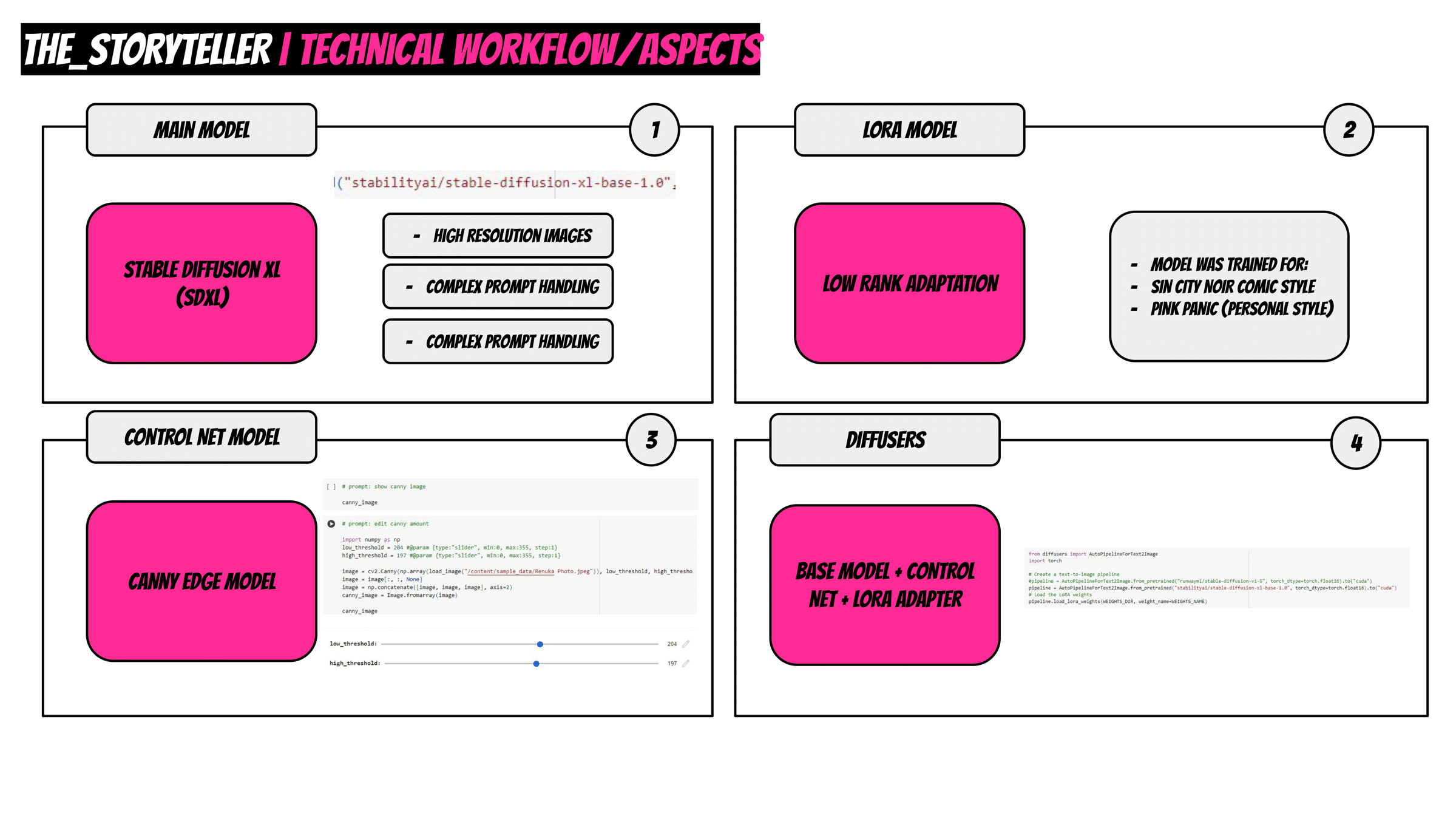
The Art of Prompt Engineering
Crafting the Perfect Architectural Narrative
Our prompt configuration system breaks down into strategic components:
Trigger Words
- “PS” – Activates our custom PinkSin style
- “A noir comic-style scene” – Sets the visual aesthetic
- “Comic panel, pink panic noir style” – Reinforces artistic direction
Character Development
Detailed character descriptions ensure consistent storytelling:
- Physical attributes (beard, build, posture)
- Emotional qualities (calm, sincere smile)
- Professional context (architectural tools, office setting)
Scene Settings
Environmental details that ground the narrative:
- Desk setup with monitors and papers
- Subtle architectural tools
- Lighting that supports the mood
- Background elements that fade appropriately
Style and Color Direction
- Bold black-white contrast
- Pink panic noir aesthetic
- Emphasis on closure, connection, and confidence
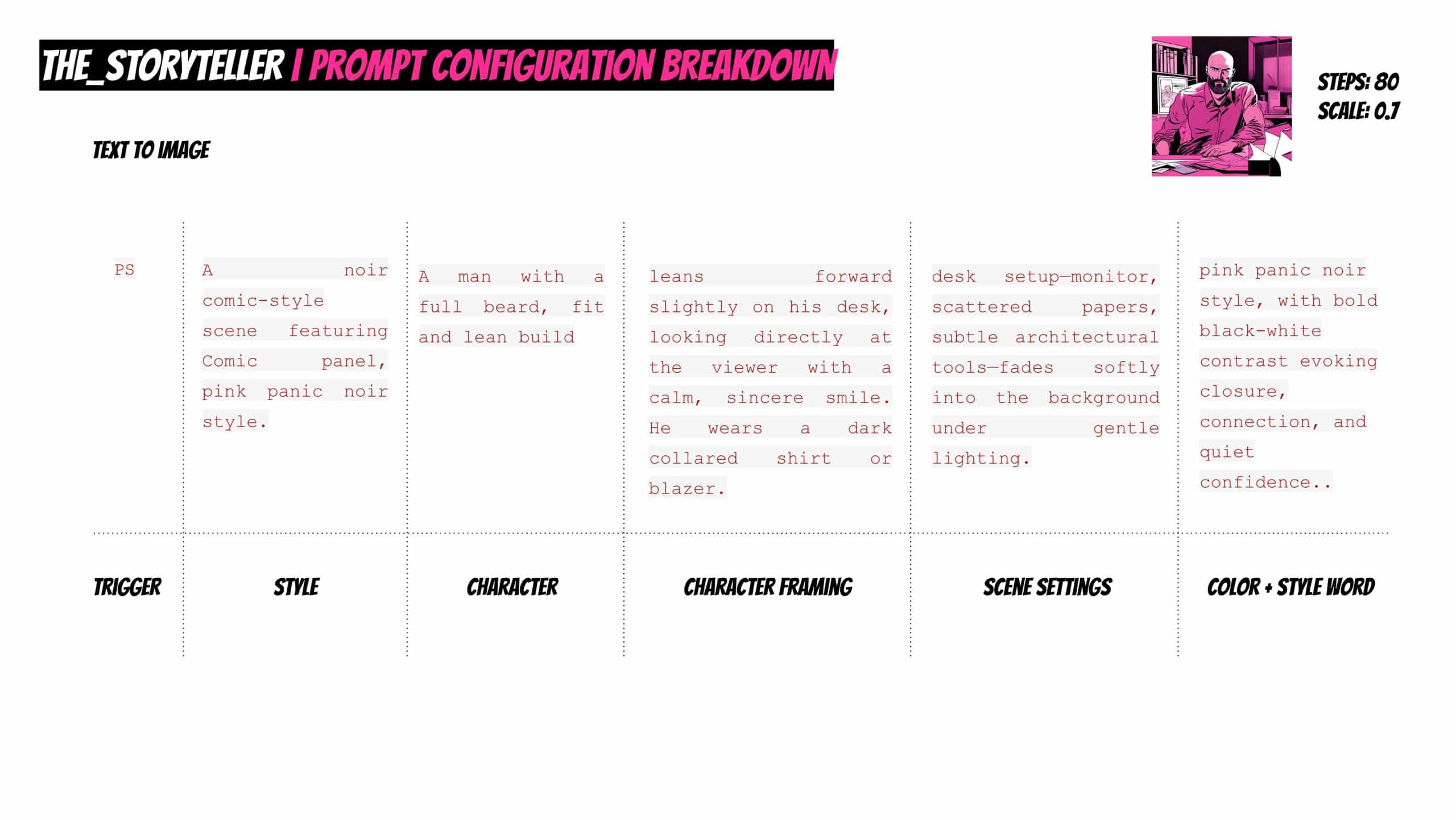
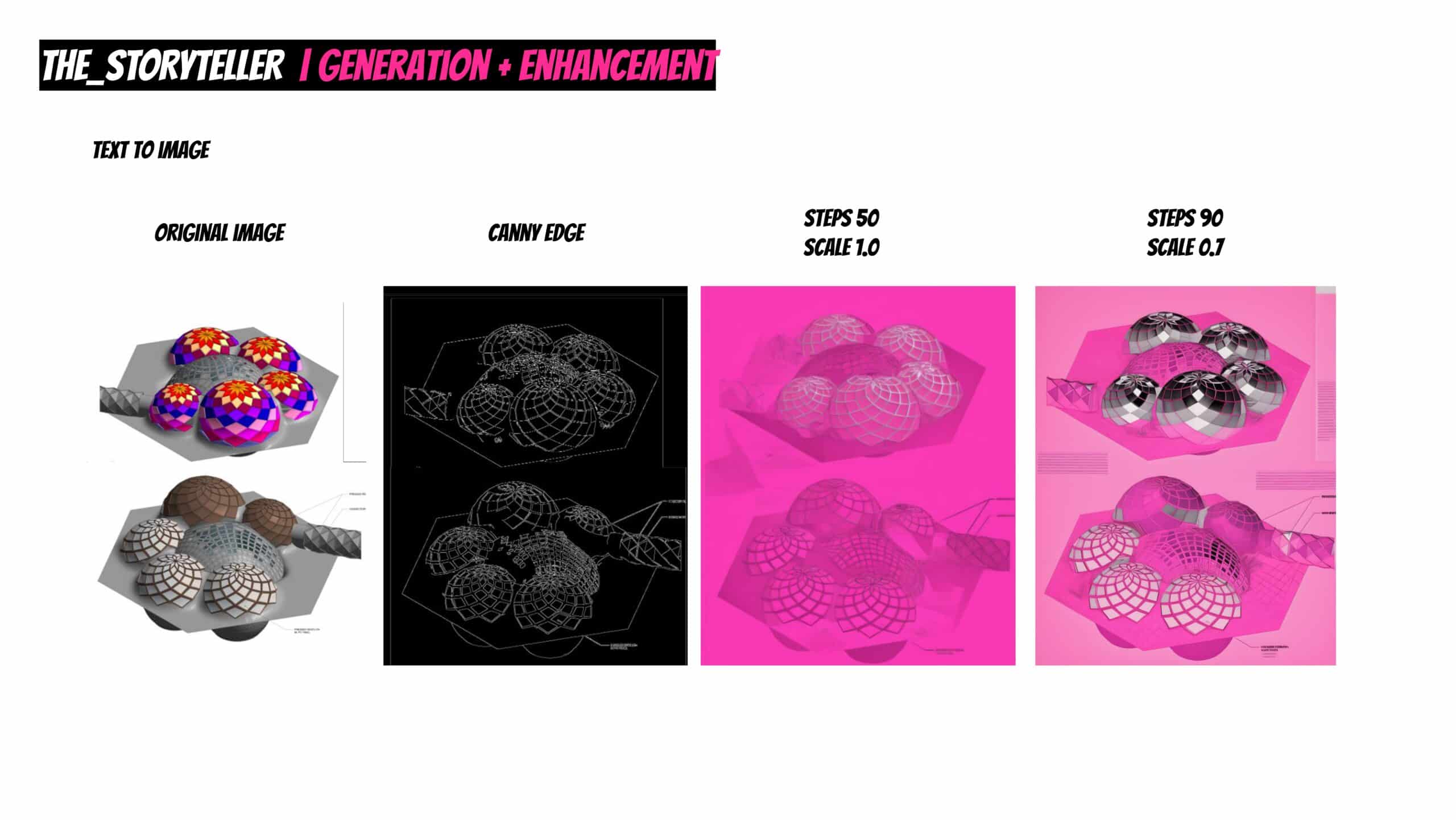
User Experience: From Concept to Story
The Three-Step Gradio Interface
Step 1: Image Upload and Style Application
Users can:
- Upload multiple images simultaneously
- Apply custom LoRA styles with real-time preview
- Control Canny edge detection and LoRA scaling
- Adjust color parameters for optimal aesthetic
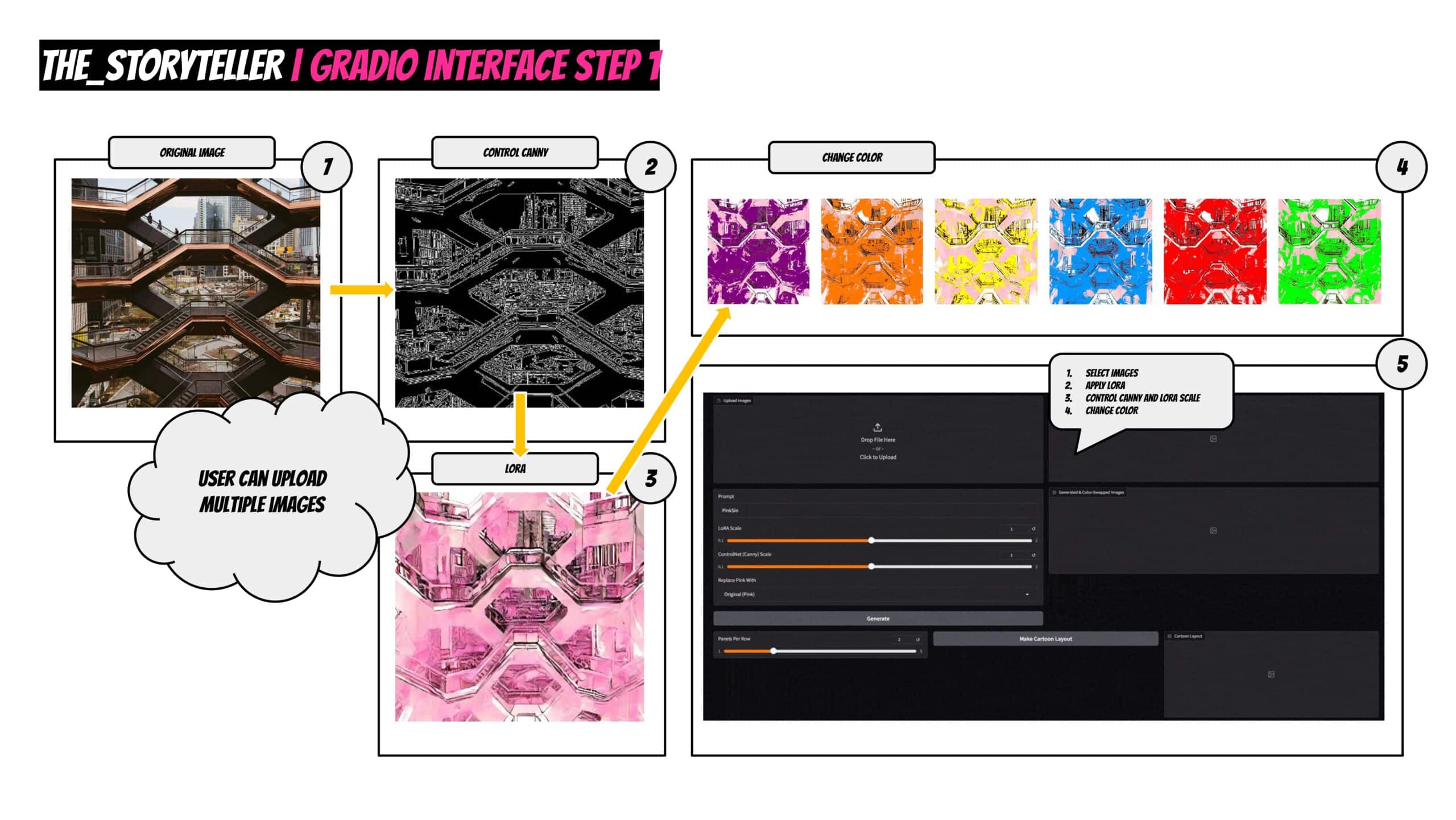
Step 2: Generation and Selection
The interface provides:
- Multiple generated variations (up to 5 per row)
- Side-by-side comparison with original images
- Quality control options for refinement
- Batch processing capabilities for efficiency
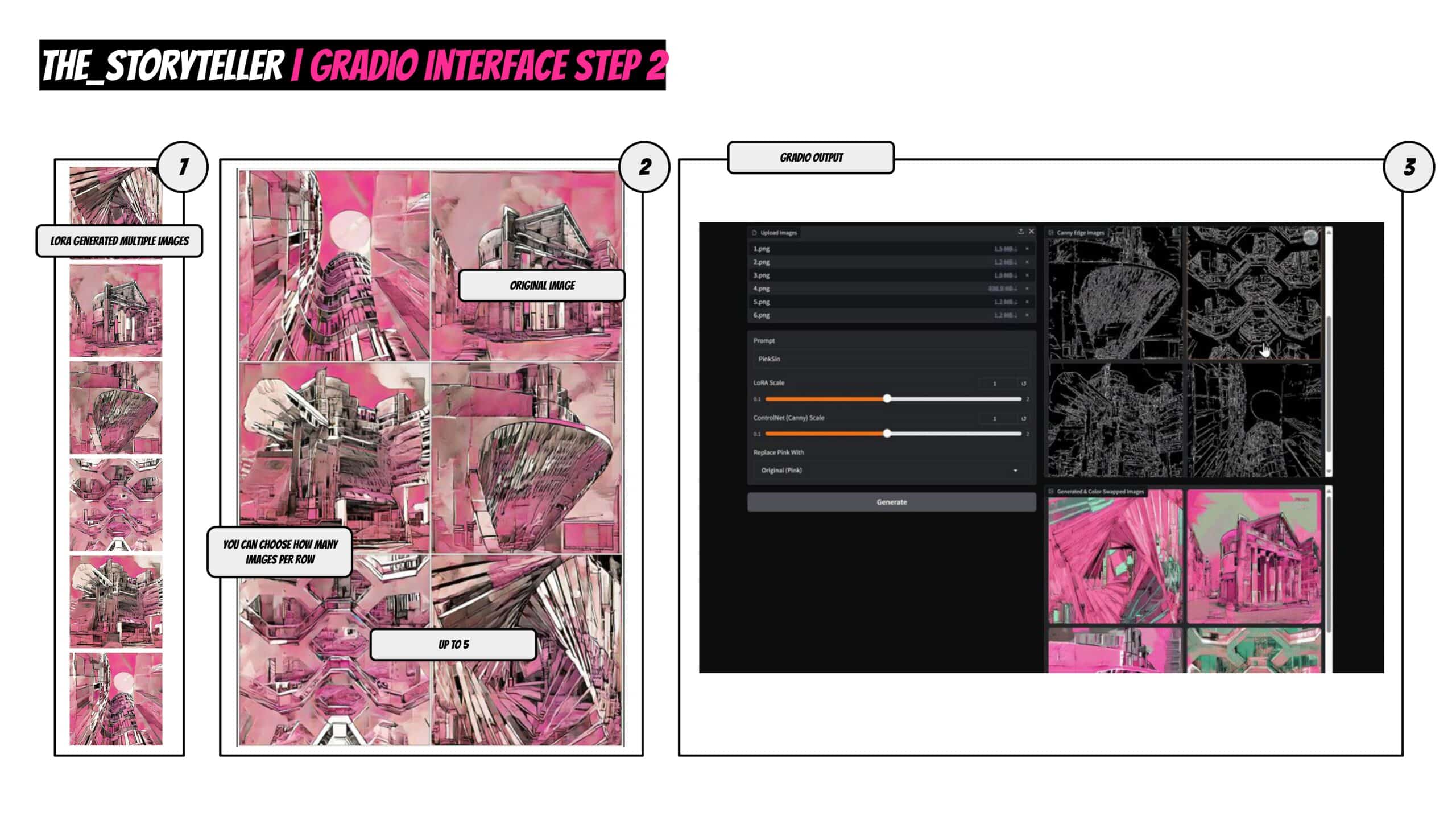
Step 3: Narrative Enhancement
Final storytelling features:
- Speech bubble integration for dialogue
- Text customization with adjustable sizing
- Layout optimization for comic-style presentation
- Export options for various presentation formats
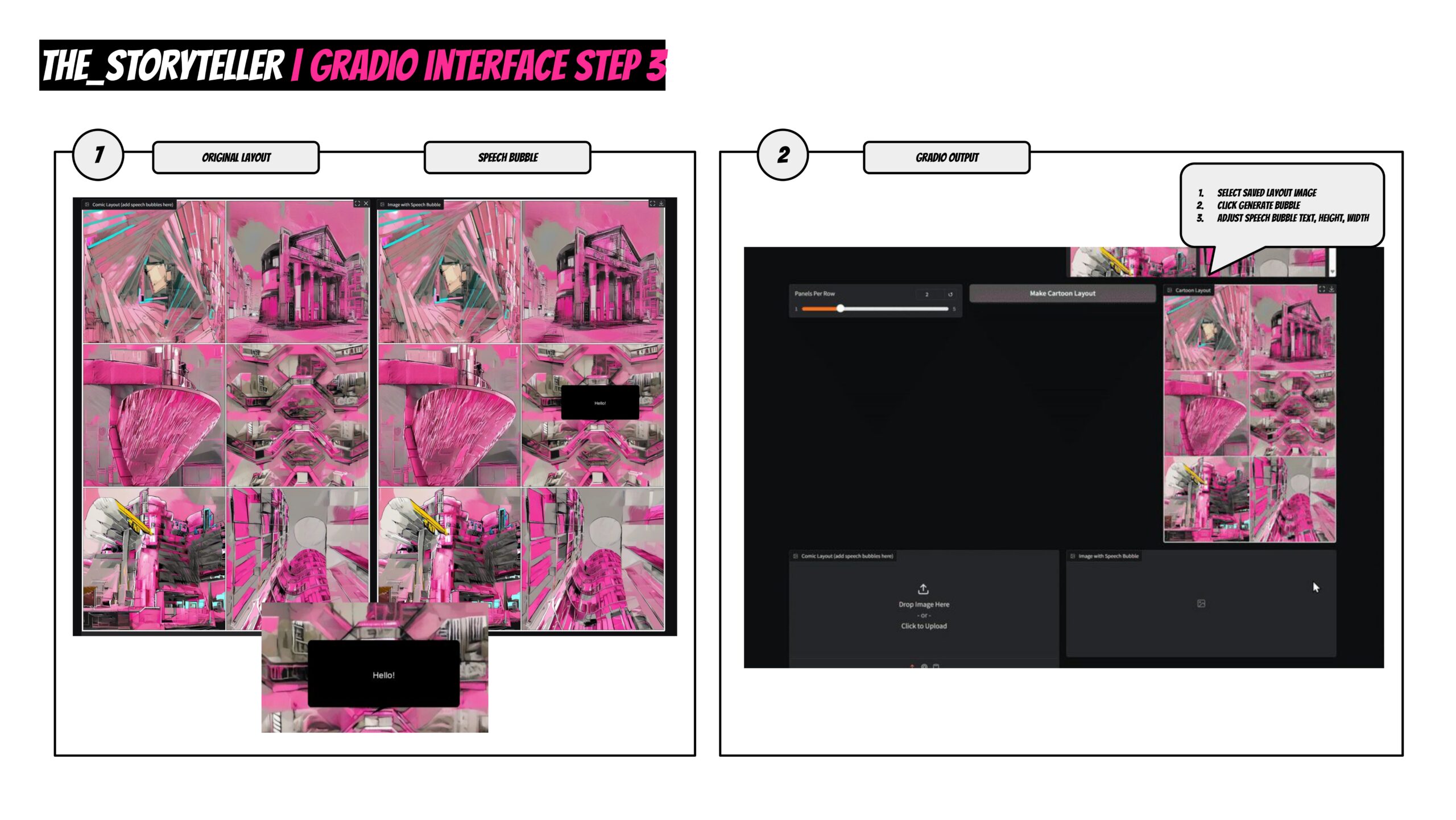
Overcoming Challenges: Learning Through Iteration
Problem 1: Text Limitations
Challenge: Generated text often appeared as gibberish or unreadable characters.
Solution:
- Implemented alternative models with better text transfer capabilities
- Enhanced Gradio integration for text handling
- Developed workarounds using speech bubbles and overlay text
Problem 2: Scale Adaptability Issues
Challenge: Generated elements appeared at incorrect scales with random add-ons.
Solution:
- Adjusted generation steps and scaling parameters
- Fine-tuned prompt complexity and detailing
- Implemented better positive/negative prompt strategies
- Enhanced trigger word usage for consistent results
Problem 3: Color Inconsistency
Challenge: Color grading results didn’t match expectations (“color gaslighting” as the team humorously noted).
Solution:
- Refined color control mechanisms
- Improved prompt engineering for color consistency
- Added manual color adjustment tools in the interface

Conclusion: Every Building Has a Story
As James discovered through his journey with The Storyteller, architecture is fundamentally about people and their stories. Technology – no matter how advanced – should serve to amplify human connection, not replace it.
The Storyteller doesn’t just generate pretty pictures; it creates bridges between technical expertise and human emotion, between architectural vision and client dreams, between the buildings we design and the lives they shelter.
Key Takeaways
- Technology should amplify human stories, not replace them
- Visual communication can bridge professional-client gaps
- AI tools should be designed with empathy and human understanding
- Every architectural project has a unique story waiting to be told
- Innovation comes from understanding both technical possibilities and human needs
The Final Question..
“So whats your story?”

